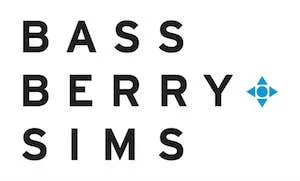- with readers working within the Technology and Construction & Engineering industries
- within Coronavirus (COVID-19) topic(s)
On October 26, the Government Accountability Office (GAO) sent its annual bid protest report to Congress, which reflected a dramatic increase in protests filed following four straight years of decline.
The report provides important insights into the current state of GAO bid protests. The numbers can also help contractors determine whether a bid protest is appropriate or which protest grounds have been particularly successful. We unpack some of the key insights from the report below.
- An increase in overall protests. 2,025 protests were filed in FY 2023, representing a 22% increase from the previous year. This is the first increase in the past four years. The report cites an important caveat to the increase, citing a single procurement—the Department of Health and Human Services Chief Information Officer-Solutions and Partners (CIO-SP4) Government-Wide Acquisition Contract (GWAC) – which generated a substantial number of protests during the year.
- Increase in the sustain rate. In FY 2023, the sustain rate increased to 31%. From 2019 to 2022, the sustain rate hovered around 13-15%. Again, the report caveated the increase with the GAO sustaining 119 protests involving the CIO-SP4 procurement. Without the 119 sustains, the sustain rate would remain at about 14%.
- Most prevalent protest grounds. The report details the most popular reasons for sustaining protests over the prior year: 1) unreasonable technical evaluation; 2) flawed selection decision; and 3) unreasonable cost or price evaluation. This is most likely due to these types of challenges being among the most frequently raised grounds for protests.
- Higher effectiveness rate. The GAO's report showed that the overall "effective" rate—protests resulting in either corrective action or a sustained protest—increased to 57%.This means that protestors received some sort of relief in over half of the protests filed. This is the highest effective raterecorded since GAO began tracking the metric. Once again, the CIO-SP4 procurement affected the overall number; however, even with these sustained protests, the effectiveness rate remains high.
- Agencies followed GAO recommendations. This year, agencies followed every one of GAO's recommendations, unlike last year. GAO decisions are technically "recommendations;" however, agencies generally always follow GAO's advice. In FY 2022, for the first time in five years, the Navy told GAO it did not agree with its legal opinion and, therefore, would not follow its recommendation to reopen discussions or amend the solicitation.
Conclusion
At first blush, the increase in protests filed and the sustain rate seems substantial; however, a deeper review finds that a single, problematic procurement explains much of the increase. With that said, the effectiveness rate of filing a protest remains high, giving many filers a good chance of obtaining a successful outcome. In addition, the problems with the CIO-SP4 procurement may push agencies to become less reliant on large Government-Wide Contract Acquisition (GWAC) contracts.
The content of this article is intended to provide a general guide to the subject matter. Specialist advice should be sought about your specific circumstances.



